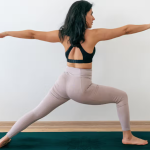With the world as we know it on hold due to the coronavirus outbreak, it leaves plenty of unanswered questions in the average yoga teacher’s mind.
When will everything return to normal? When will I be able to teach regular classes again? And how will I survive financially without my yoga teaching income?
At the moment no one knows the answer to the first two questions, but the last one can be answered to some degree. Due to the huge loss of income suffered by people across the country the Chancellor Rishi Sunak has promised to give self-employed people a financial lifeline through a government grant.
Yay! And – phew!
However, if, like me, you find HMRC-speak intimidating and hard to understand, then read on for a plain-speaking, practical guide for how you can get some money back during this scary and difficult time.*
Am I eligible?
This is the first question you need to ask yourself. And there are a few parameters:
1. You need to be registered as a sole trader or have your business registered with HMRC (Her Majesty’s Revenue & Customs to give it the full title) to qualify. So, if you’ve only just qualified as a yoga teacher, or haven’t been paying any taxes because you’ve been earning way under the threshold and haven’t got around to registering yet, then, unfortunately, you won’t be able to claim anything for loss of earnings.
2. You need to have submitted your Self-Assessment tax return for the last tax year, which is April 2018 – April 2019. Although kindly, HMRC is giving a deadline extension and is saying you’ve got till the 23 April 2020 to do it.
3. You need to be currently teaching yoga. So, you’re not eligible if you’re recently retired, or have decided to stop teaching.
4. You need to have lost potential profits because of coronavirus. So, if like many enterprising yoga teachers you’ve made the leap into online yoga then you need to consider whether you have actually made a loss. However, even if there’s only a small loss in income, you’ll still be eligible to make a claim.
5. You won’t qualify if your income is a mixture of part-time income and self-employment, so if you’re a yoga teacher on the side, but you’re employed elsewhere, then you won’t be eligible to apply
6. You won’t qualify if anyone in your household earns more than £50,000. If, on the other hand, your other half earns £49,000, you will both qualify for support – that’s the craziness of cut-off points!
What will I get?
If HMRC reckons you’re eligible you will get up to 80% of your average earnings, capped at £2,500 per month.
This will be paid as a taxable grant, so in layman’s terms you’ll get one lump sum, which will then be tax-deductible, ie you’ll need to declare it in your next tax return.
The lump sum will be worked out by taking an average of your income from the last three years, so you’ll need to have submitted three years’ worth of tax returns. However, if you haven’t submitted three tax returns, don’t worry as they will calculate the grant based on a period of continuous self-employment within the years you have submitted tax returns for.
And – although this hasn’t been confirmed yet – the amount will be to cover at least three months (and may be extended at a later date, though this is still to be confirmed by the government). However, as mentioned above, the maximum payment will be £2,500 per month. I bet we all wished we earned that much working as yoga teachers!
How do I get it?
The simple answer to that is that you can’t – yet.
The government aims to contact anyone eligible for the scheme by mid-May, with the aim of paying you in one go in June. You will be invited to claim using an online form on the gov.uk website. If you don’t have online access then alternative ways to claim will be made available.
What do I do in the meantime?
If you haven’t yet tried online yoga teaching, then you might want to give it a go. Even if you just teach one class a week it’s a way of keeping your hand in, as well as keeping your students from drifting off to other online offerings.
Alternatively, do you have any other skills that you could call on? Diversification is a keyword in this pandemic – it might be time to consider taking other work, again just to keep things ticking over.
If you have tried and it’s not for you, then you might be able to apply for a deferral of your income tax or VAT payment.
If you own your home, your bank should offer a mortgage holiday; here’s Money Service Advice’s guide on these. If you rent and you’re struggling, you should approach your landlord or landlady to discuss a temporary discount or rent holiday as soon as possible – it’s worth noting you should be protected from eviction for the next 3 months, as reported by the BBC.
If things get bad, don’t forget that you are also eligible to apply for Universal Credit in full, which, if you’re urgently running short of funds and are the main bread-winner, may be the best shot to tide you over till things get back to normal.
*Just to be clear, this is not legal advice, just a handy guide to make sense of the government’s financial bail-out.
Remember that even though the studios are closed, our school remains open. If you’re a current trainee or YogaLondon graduate, you can continue to work towards your 500-hour certificate and develop new skills by studying online:
Online Anatomy Module Intensive: starts 25th April – 45 hours of training over 8 days
Online Philosophy Module: starts 23rd May – 45 hours of training over 3 weekends













